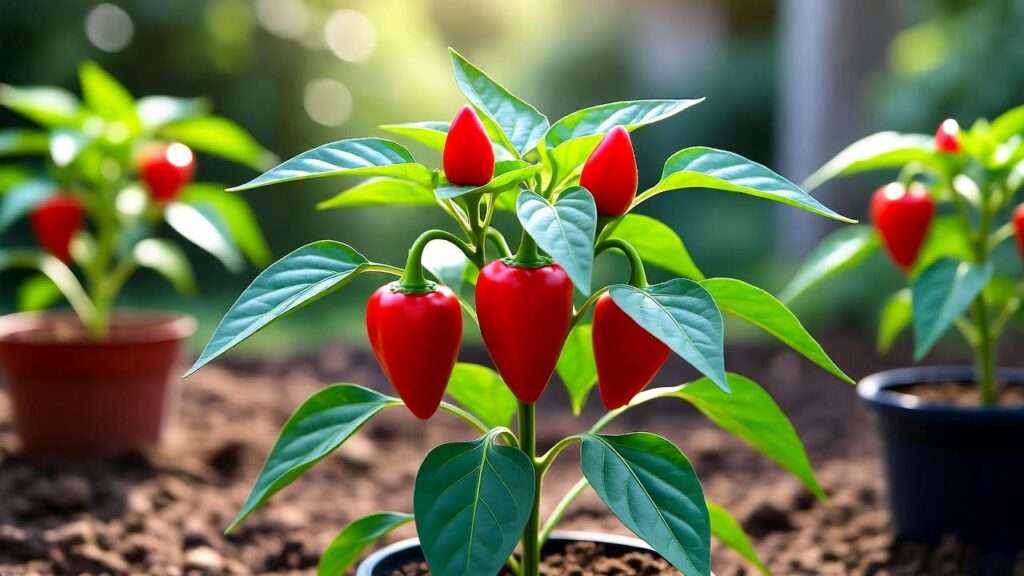Imagine plucking vibrant, spicy small red peppers from your own plant, grown right on your balcony or windowsill! Whether you’re a gardening newbie or a seasoned green thumb, growing a small red pepper plant is a rewarding, low-maintenance way to spice up your meals and brighten your space. This comprehensive guide is your one-stop resource for mastering small red pepper plant care, from seed to harvest. Packed with expert insights drawn from years of horticultural experience and research-backed practices, this article will empower you to grow thriving chili peppers, even in limited spaces. Let’s dive into the world of compact, fiery plants and solve every beginner’s challenge along the way! 🌞
Understanding the Small Red Pepper Plant 🌶️
What is a Small Red Pepper Plant?
A small red pepper plant refers to compact varieties of chili peppers (Capsicum spp.) that produce vibrant red fruits, perfect for small gardens, pots, or indoor spaces. These plants, typically growing 1–3 feet tall, are ideal for urban gardeners or anyone with limited space. Popular varieties include Thai Chili, Serrano, Cayenne, and ornamental types like Dwarf Red Hot, which double as decorative plants. Their fruits range from mild to fiery, measured on the Scoville scale, and are used in cooking, drying, or preserving.
Here’s a quick comparison of popular small red pepper varieties:
| Variety | Height | Heat Level (Scoville) | Growth Time | Best For |
| Thai Chili | 12–18 inches | 50,000–100,000 | 80–100 days | Spicy dishes, containers |
| Serrano | 18–24 inches | 10,000–23,000 | 75–90 days | Salsas, fresh use |
| Cayenne | 18–30 inches | 30,000–50,000 | 70–100 days | Drying, spice blends |
| Dwarf Red Hot | 8–12 inches | 5,000–30,000 | 60–80 days | Ornamental, small pots |
Benefits of Growing Small Red Pepper Plants 🥗
Small red pepper plants are a gardener’s dream for several reasons:
- Space-Saving: Perfect for balconies, patios, or windowsills, they thrive in containers as small as 1–2 gallons.
- High Yield: A single plant can produce dozens of peppers, providing months of harvests.
- Culinary Versatility: Use fresh, dried, or pickled peppers in salsas, sauces, or stir-fries.
- Aesthetic Appeal: Their bright red fruits and lush green foliage add a pop of color to any space.
Common Challenges for Beginners 🚫
Beginners may face hurdles like pests (e.g., aphids), overwatering, or poor fruit production. Don’t worry—this guide addresses these issues with expert solutions, ensuring your small red pepper plant thrives. By following these steps, you’ll avoid common pitfalls and enjoy a bountiful harvest.
Choosing the Right Small Red Pepper Plant Variety 🌿
Top Varieties for Beginners
Selecting the right variety sets the stage for success. Here are beginner-friendly small red pepper varieties:
- Jalapeño: Mild to medium heat (2,500–8,000 Scoville), great for salsas and grilling.
- Thai Chili: Spicy and compact, ideal for small pots and Asian dishes.
- Cherry Bomb: Sweet-spicy flavor, perfect for pickling or fresh eating.
- Dwarf Red Hot: Ornamental and edible, suited for tiny spaces or indoor growing.
Each variety has unique growth habits and flavors, so choose based on your taste and space. For example, Thai Chili is excellent for spice lovers, while Jalapeño suits milder palates.
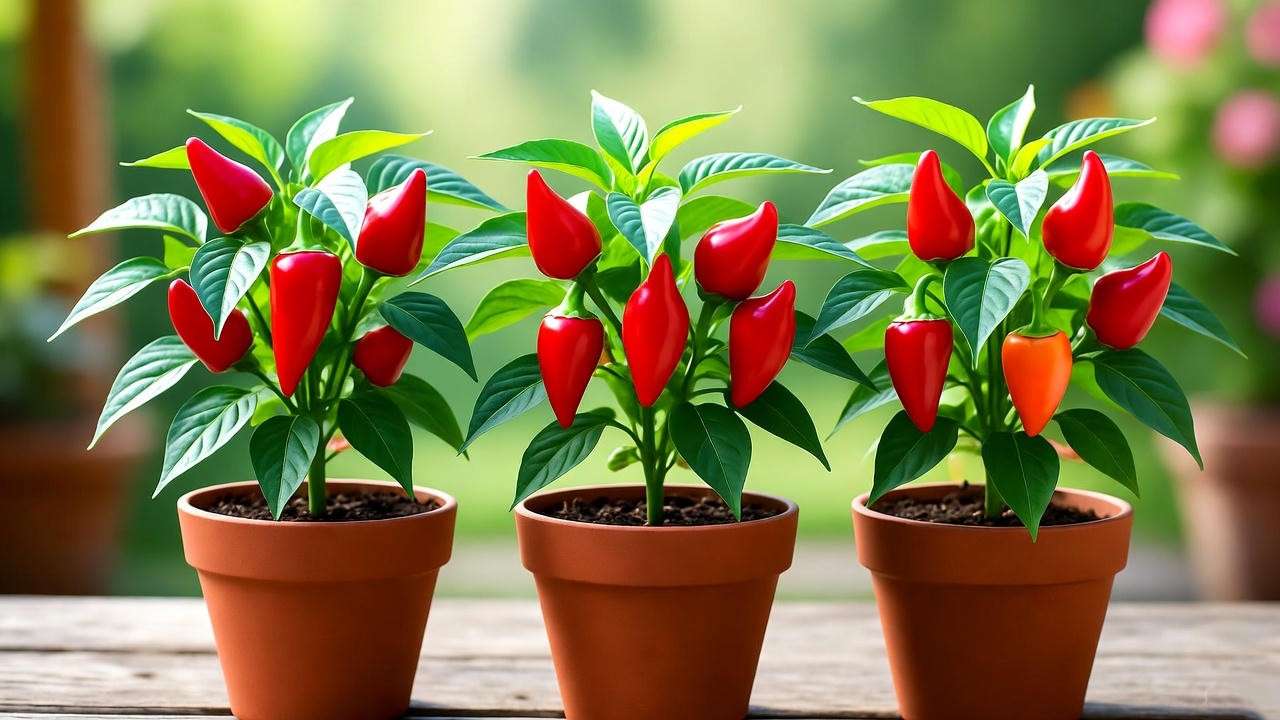
Where to Source Quality Seeds or Seedlings 🛒
Healthy plants start with quality seeds or seedlings. Purchase from:
- Reputable Nurseries: Local garden centers with certified stock.
- Online Seed Banks: Trusted retailers like Johnny’s Selected Seeds or Baker Creek Heirloom Seeds.
- Farmers’ Markets: Look for healthy seedlings with vibrant leaves and no signs of wilting.
Expert Tip: Check seed packets for “F1 hybrid” or “open-pollinated” labels to understand growth reliability. Avoid seedlings with yellowing leaves or root-bound pots, as they may struggle to establish.
Step-by-Step Guide to Growing a Small Red Pepper Plant 🌞
Step 1: Preparing for Planting 🧑🌾
Soil Requirements: Small red pepper plants thrive in well-draining, nutrient-rich soil with a pH of 6.0–6.8. Use a mix of potting soil, compost, and perlite (2:1:1 ratio) for optimal drainage and fertility.
Container vs. Garden:
- Containers: Ideal for small spaces; choose pots at least 12 inches deep with drainage holes.
- Garden Beds: Space plants 18–24 inches apart for air circulation.
Tools and Supplies:
- 1–2 gallon pots (with drainage)
- Potting mix and compost
- Balanced fertilizer (e.g., 10-10-10 NPK)
- Watering can or hose with a gentle nozzle
- Optional: Grow lights for indoor growing
Checklist for Beginners:
- Pot or garden space
- Quality soil mix
- Seeds or seedlings
- Fertilizer
- Watering tools
Step 2: Planting Your Small Red Pepper Plant 🌱
When to Plant: Start seeds indoors 8–10 weeks before the last frost (typically early spring) or plant seedlings after the frost risk passes. Check your local frost dates for timing.
How to Plant:
- Seeds: Sow ¼ inch deep in seed trays filled with moist seed-starting mix. Keep at 75–85°F (24–29°C) using a heat mat if needed. Germination takes 7–14 days.
- Seedlings: Dig a hole slightly larger than the root ball, place the seedling, and cover with soil. Water gently.
Visual Tip: [Suggest an image of seed planting depth or seedling transplanting for clarity.]
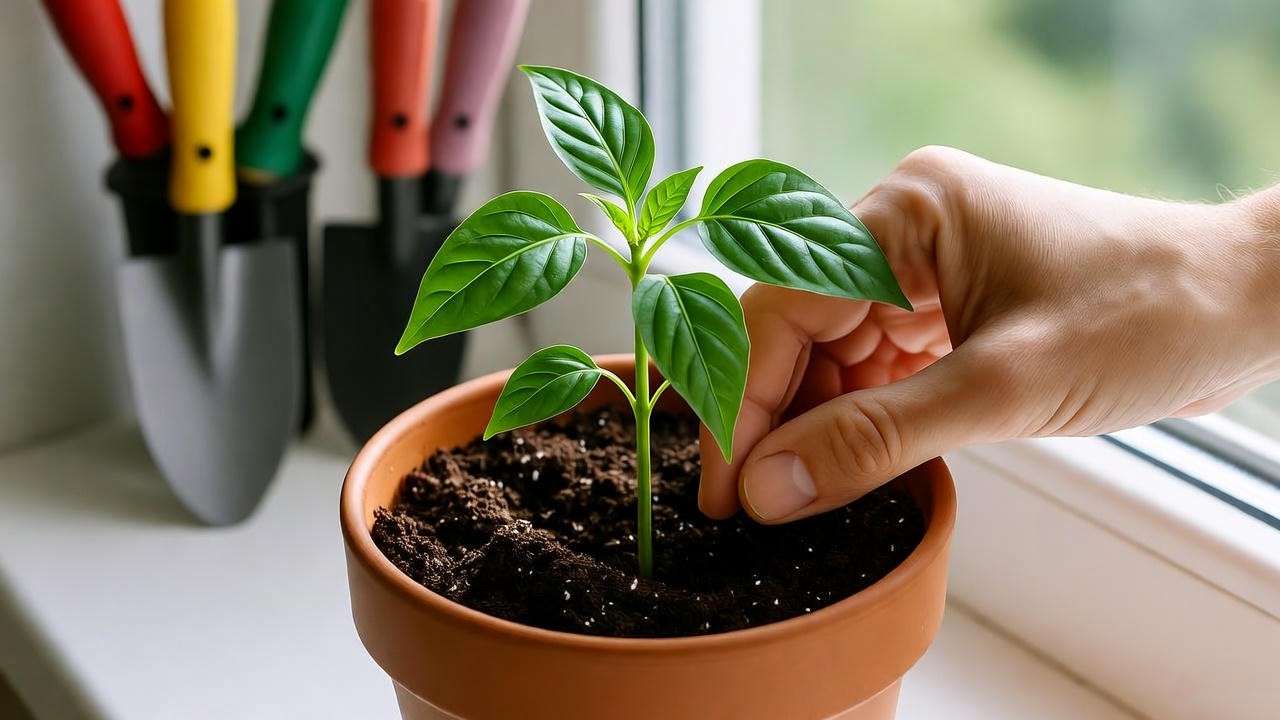
Step 3: Providing Optimal Growing Conditions ☀️
Light: Small red pepper plants need 6–8 hours of direct sunlight daily. For indoor growing, use full-spectrum grow lights (12–16 hours daily).
Temperature: Maintain 70–85°F (21–29°C) during the day and above 60°F (15°C) at night. Protect plants from frost with row covers or by moving pots indoors.
Watering: Keep soil consistently moist but not waterlogged. Water when the top inch of soil feels dry, typically every 2–3 days in warm weather.
Humidity: Peppers prefer moderate humidity (40–60%). Indoors, use a pebble tray or mist leaves to maintain moisture.
Expert Insight: In cooler climates, place pots near a south-facing window or use reflective mulch to maximize light and heat.
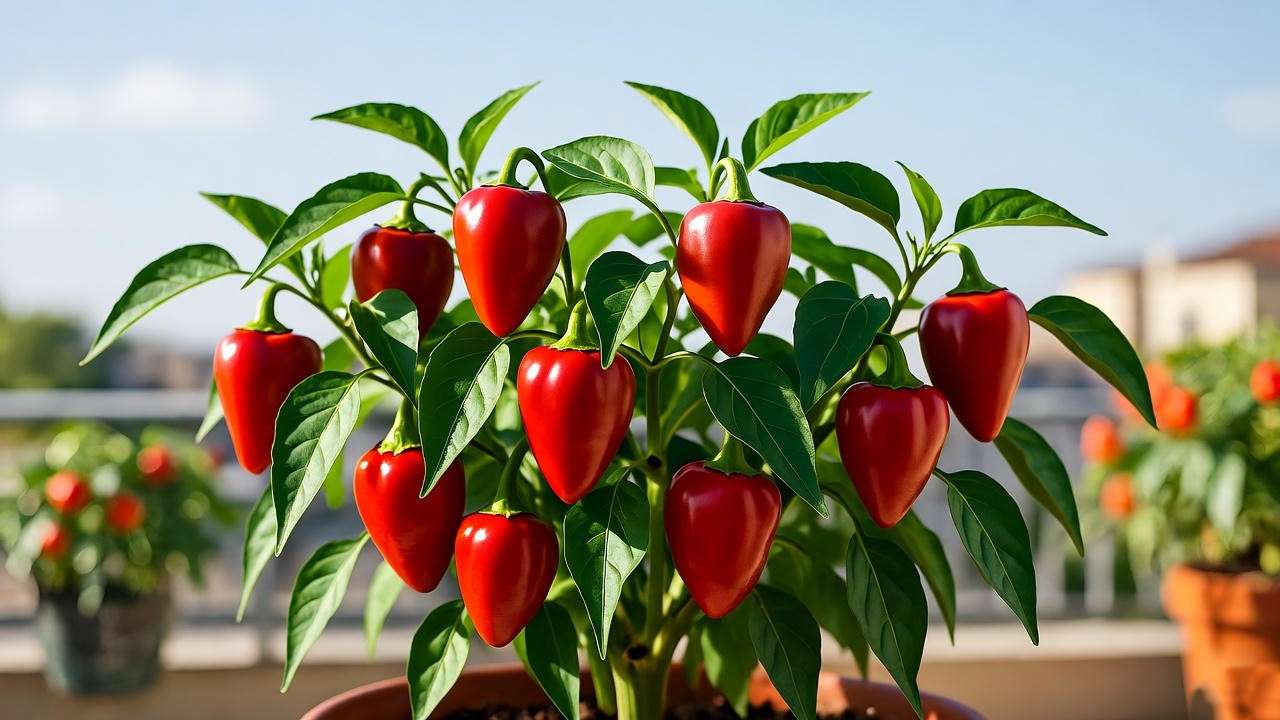
Step 4: Fertilizing and Feeding Your Plant 🥕
Feed your small red pepper plant with a balanced fertilizer (e.g., 10-10-10 or 5-10-10 NPK) every 2 weeks during the growing season. Switch to a low-nitrogen, high-potassium fertilizer (e.g., 5-10-10) once flowering begins to boost fruit production.
Common Mistake: Over-fertilizing can cause leafy growth at the expense of fruit. Follow package instructions and dilute liquid fertilizers to half-strength for young plants.
Step 5: Pruning and Supporting Growth ✂️
Pruning: Pinch off early flowers to encourage bushier growth. Remove suckers (small shoots between branches) to improve air circulation and fruit size.
Support: Stake taller varieties (e.g., Cayenne) with bamboo stakes or cages to prevent branches from snapping under fruit weight.
Visual Suggestion: [Include a short video tutorial on pruning techniques for beginners.]
Caring for Your Small Red Pepper Plant Long-Term 🌳
Watering and Maintenance 💧
Check soil moisture regularly using the finger test (insert a finger 1 inch into the soil; water if dry). Overwatering leads to root rot, while underwatering causes leaf drop. Adjust watering based on season—less in cooler months, more in summer.
Signs to Watch:
- Overwatering: Yellowing leaves, soggy soil.
- Underwatering: Wilting, dry, or curling leaves.
Seasonal Tip: Reduce watering in fall/winter for indoor plants to mimic their natural dormancy.
Pest and Disease Management 🐞
Common Pests:
- Aphids: Small green insects on leaves; control with neem oil or insecticidal soap.
- Spider Mites: Tiny webs on undersides of leaves; increase humidity and spray with water.
- Whiteflies: White, flying insects; use yellow sticky traps.
Organic Solutions:
- Spray neem oil (1 tsp per quart of water) weekly.
- Plant marigolds or basil nearby to deter pests.
Common Diseases:
- Blossom End Rot: Dark spots on fruit; caused by calcium deficiency or uneven watering.
- Fungal Infections: Powdery mildew or leaf spot; improve air circulation and avoid overhead watering.
| Issue | Symptoms | Cause | Solution |
| Aphids | Sticky leaves, stunted growth | Sap-sucking insects | Neem oil, ladybugs |
| Blossom End Rot | Black spots on fruit | Calcium deficiency | Consistent watering, add lime |
| Powdery Mildew | White coating on leaves | Poor air circulation | Fungicide, prune for airflow |
Pollination Tips for Better Fruiting 🐝
Pepper plants are self-pollinating, but indoor or low-pollinator environments may need help. Gently shake plants or use a small brush to transfer pollen between flowers. Outdoors, attract bees by planting pollinator-friendly flowers like lavender nearby.
Troubleshooting Poor Fruit Set:
- Cause: Low light, high temperatures, or lack of pollinators.
- Solution: Increase light exposure, maintain 70–85°F, and hand-pollinate if needed.
Harvesting and Using Your Small Red Peppers 🍎
When and How to Harvest 🌶️
Knowing when to harvest your small red pepper plant ensures the best flavor and encourages further production. Most small red pepper varieties are ready to pick when they turn a vibrant red, though some can be harvested green for a milder taste. Here’s how to tell if your peppers are ready:
- Color: Fully red (or the variety’s mature color) and glossy.
- Firmness: Peppers should feel firm, not soft or shriveled.
- Size: Matches the expected size for the variety (e.g., 1–3 inches for Thai Chili).
Harvesting Technique:
- Use clean, sharp scissors or pruners to cut the pepper stem about ½ inch above the fruit.
- Avoid pulling peppers by hand, as this can damage the plant.
- Harvest regularly to encourage new fruit production.
Storage Tips:
- Fresh: Store in a breathable bag in the refrigerator for up to 3 weeks.
- Dried: String peppers and hang in a dry, well-ventilated area or use a dehydrator.
- Frozen: Freeze whole or chopped peppers in airtight bags for up to 6 months.
Expert Insight: Harvest in the morning when temperatures are cooler to preserve flavor and texture.
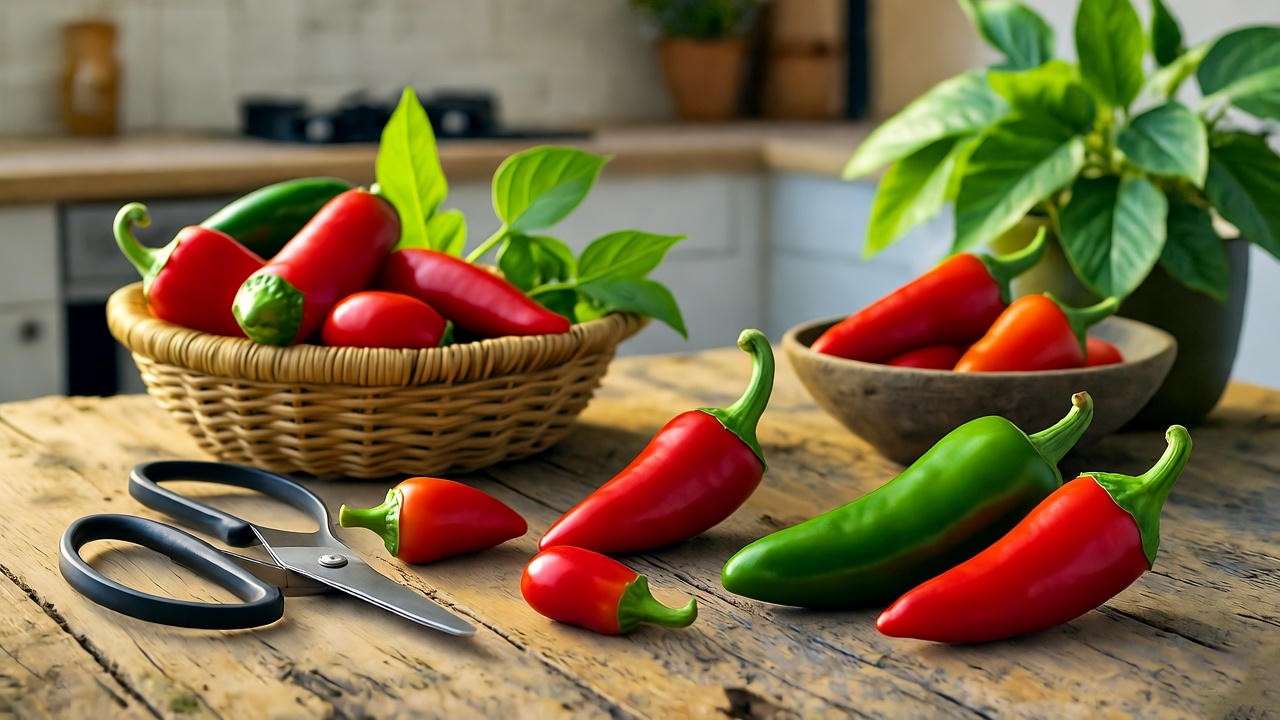
Creative Uses for Your Peppers in the Kitchen 🍴
Small red peppers are culinary powerhouses, adding heat and flavor to countless dishes. Here are some ideas to make the most of your harvest:
- Fresh: Dice into salsas, stir-fries, or salads for a spicy kick.
- Dried: Grind into chili flakes or powder for seasoning.
- Preserved: Pickle in vinegar or make hot sauce for long-term use.
Beginner’s Red Pepper Salsa Recipe:
- Ingredients: 5 small red peppers (e.g., Jalapeño or Serrano), 2 tomatoes, 1 small onion, 1 garlic clove, juice of 1 lime, salt to taste.
- Instructions: Finely chop peppers, tomatoes, and onion. Mince garlic. Mix with lime juice and salt. Let sit for 30 minutes to meld flavors. Serve with chips or tacos.
Nutritional Benefits: Small red peppers are rich in vitamin C (one pepper can provide over 100% of your daily needs), vitamin A, and antioxidants like capsaicin, which may boost metabolism and reduce inflammation.
Saving Seeds for Future Planting 🌱
Saving seeds from your small red pepper plant promotes sustainable gardening and saves money. Follow these steps:
- Choose a fully ripe, healthy pepper from a vigorous plant.
- Cut open and scrape seeds onto a paper towel.
- Dry seeds in a warm, dry place for 7–10 days.
- Store in an airtight container in a cool, dark place (label with variety and date).
Pro Tip: Avoid hybrid varieties for seed saving, as they may not produce true-to-type plants. Opt for open-pollinated or heirloom varieties like Cayenne or Thai Chili.
Troubleshooting Common Problems with Small Red Pepper Plants 🛠️
Even with the best care, small red pepper plants can face challenges. Here’s how to diagnose and fix common issues:
Problem 1: Leaves Turning Yellow or Dropping
- Causes: Overwatering, nutrient deficiency, or poor drainage.
- Solutions:
- Check soil moisture; water only when the top inch is dry.
- Ensure pots have drainage holes to prevent root rot.
- Apply a balanced fertilizer (e.g., 10-10-10) every 2 weeks.
- Prevention: Use well-draining soil and monitor watering habits.
Problem 2: No Fruit or Small Fruit Size
- Causes: Insufficient light, poor pollination, or high temperatures (above 90°F/32°C).
- Solutions:
- Move plants to a sunnier spot or use grow lights (12–16 hours daily).
- Hand-pollinate by gently brushing flowers with a small paintbrush.
- Provide shade during heatwaves to reduce stress.
- Prevention: Ensure 6–8 hours of sunlight and maintain optimal temperatures (70–85°F).
Problem 3: Pest Infestations
- Causes: Aphids, spider mites, or whiteflies attracted to tender leaves.
- Solutions:
- Spray neem oil (1 tsp per quart of water) weekly.
- Introduce beneficial insects like ladybugs for natural pest control.
- Use yellow sticky traps for whiteflies.
- Prevention: Inspect plants weekly and plant companion plants like marigolds.
FAQ for Troubleshooting:
- Q: Why is my pepper plant not producing fruit?
- A: Check light, pollination, and temperature. Ensure 6–8 hours of sunlight, hand-pollinate if needed, and keep temperatures below 90°F.
Expert Tips for Maximizing Your Small Red Pepper Plant’s Potential 🚀
Take your pepper-growing game to the next level with these advanced techniques:
- Companion Planting: Grow basil or oregano nearby to repel pests and enhance flavor.
- Hydroponics: For faster growth, try a hydroponic system with a nutrient solution tailored for peppers.
- Overwintering: Bring potted plants indoors during winter to extend their lifespan. Place in a sunny window and reduce watering.
- Reflective Mulch: Use silver mulch around outdoor plants to reflect light and increase yields.
Expert Quote: “Small red pepper plants are incredibly resilient if you meet their basic needs. A little attention to light and pollination can double your harvest,” says Dr. Jane Hort, a horticulturist with 20 years of experience in vegetable gardening.
Pro Tip: Experiment with pruning techniques to shape your plant. For example, topping the main stem at 12 inches encourages bushier growth and more fruit.
FAQs About Growing Small Red Pepper Plants ❓
Q1: How long does it take for a small red pepper plant to produce fruit?
A: Most varieties take 60–100 days from planting to harvest, depending on the variety and growing conditions. For example, Dwarf Red Hot may fruit in 60 days, while Cayenne takes closer to 100.
Q2: Can I grow a small red pepper plant indoors year-round?
A: Yes! Use a sunny window or grow lights (12–16 hours daily) and maintain 70–85°F. Water sparingly in winter to mimic dormancy.
Q3: What’s the best fertilizer for my pepper plant?
A: Use a balanced fertilizer (10-10-10) during growth and switch to high-potassium (5-10-10) during flowering for better fruiting.
Q4: How do I prevent pests on my pepper plant naturally?
A: Plant marigolds or basil nearby, spray neem oil, and inspect leaves weekly for early signs of pests.
Q5: Can I grow small red pepper plants in small spaces like balconies?
A: Absolutely! Choose compact varieties like Thai Chili or Dwarf Red Hot and use 1–2 gallon pots with good drainage.
Conclusion: Start Growing Your Small Red Pepper Plant Today! 🎉
Growing a small red pepper plant is an exciting journey that yields spicy rewards with minimal effort. By following this guide—choosing the right variety, providing optimal conditions, and tackling challenges with expert solutions—you’ll be harvesting vibrant peppers in no time. Whether you’re spicing up your meals or adding a splash of color to your home, these compact plants are perfect for beginners and seasoned gardeners alike.
Ready to get started? Grab your seeds or seedlings, follow the steps above, and share your progress in the comments or on social media using #PepperGrowingJourney. For more plant care tips, check out our articles on “Companion Plants for Peppers” or “Indoor Gardening for Beginners”. Happy growing up! 🌶️

